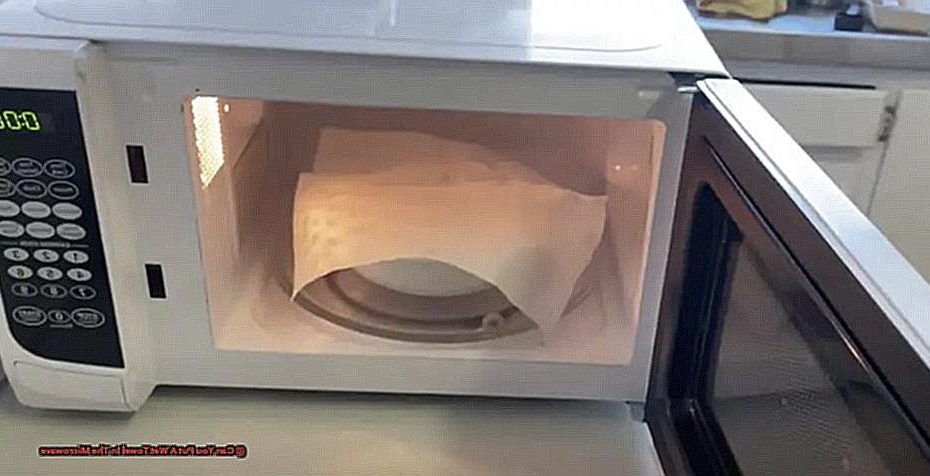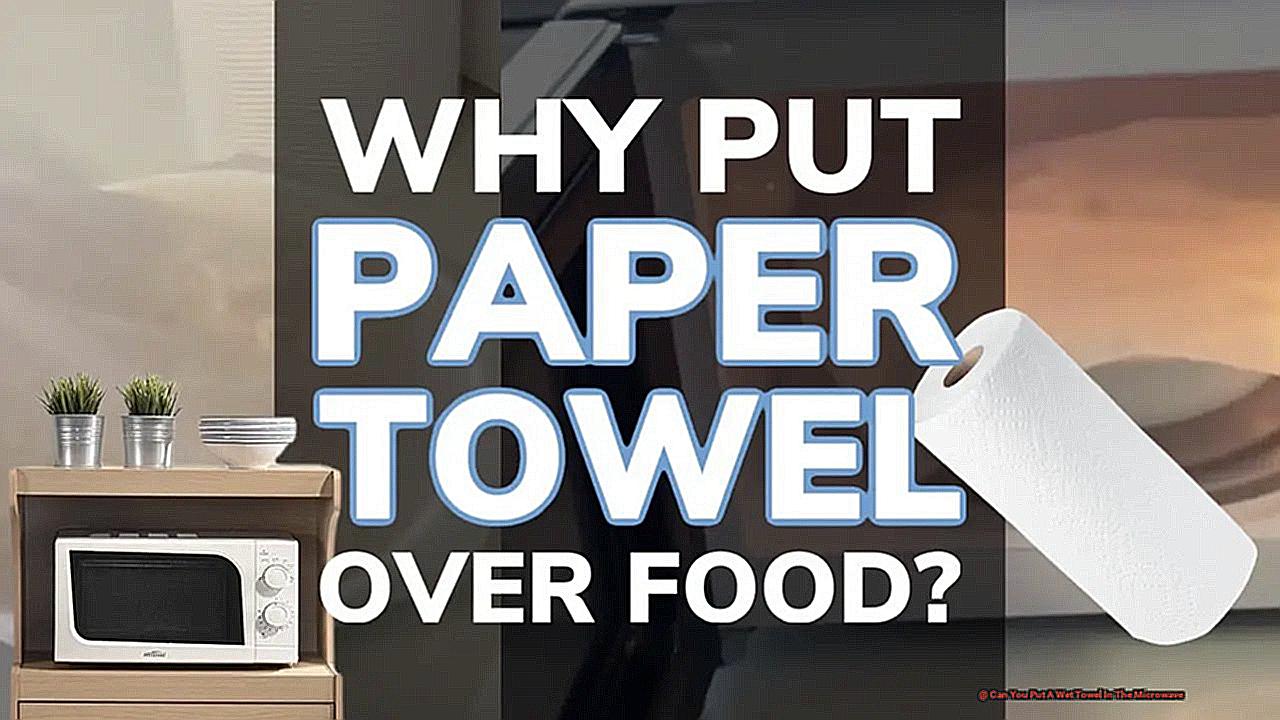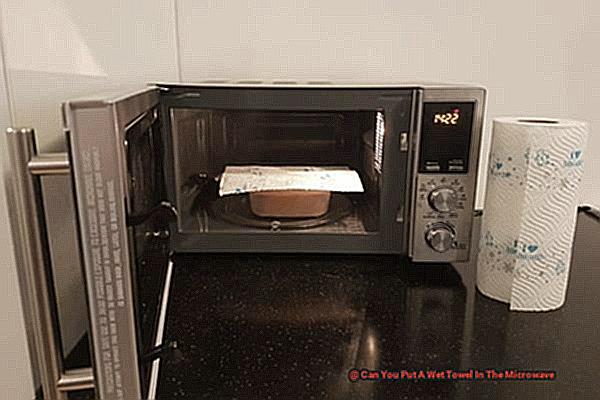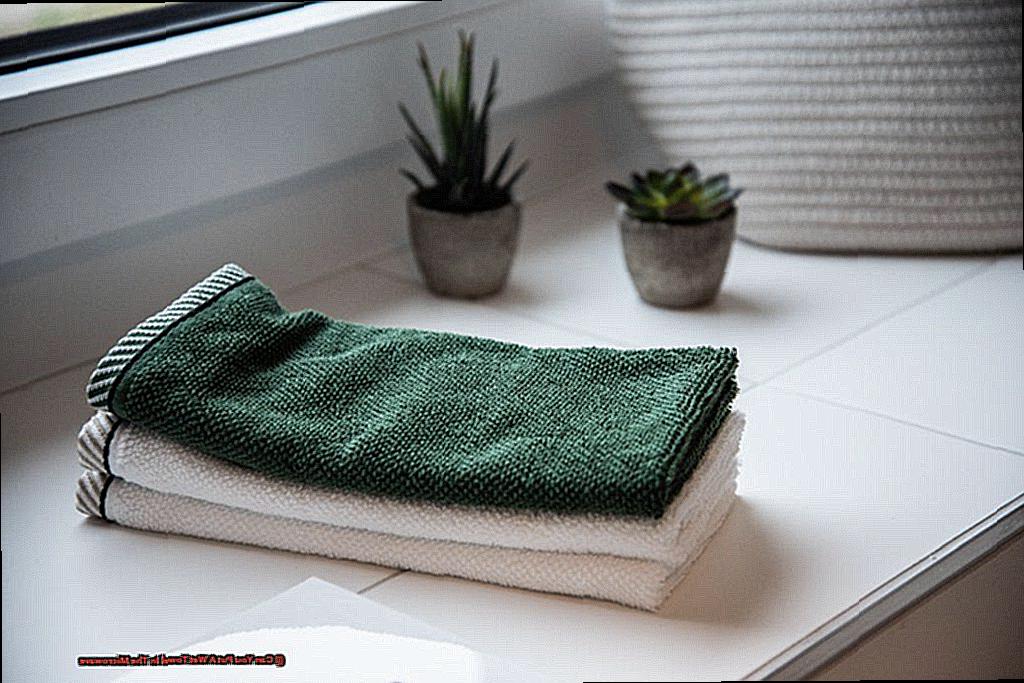Imagine this scenario: you’re running late for work and need to quickly heat up your breakfast sandwich in the microwave. In your rush, you grab a damp towel from the kitchen counter to wipe off some crumbs. But then, a thought crosses your mind – is it safe to put a wet towel in the microwave?
It may seem like a simple question, but it’s one that has caused quite a stir among homeowners and even led to some serious accidents. In today’s blog post, we’ll delve into this heated topic (pun intended) and explore whether or not microwaving wet towels is actually safe. Here are some key points we’ll cover:
- The science behind microwaves and water
- Potential risks of microwaving wet towels
- Expert opinions on the matter
- Alternative methods for heating damp towels
So, before you toss that soggy towel into the microwave with your leftovers, let’s take a closer look at whether or not it’s worth the risk.
Contents
- 1 Microwave Safety Tips for Wet Towels
- 2 Understanding the Potential Dangers of Microwaving Wet Towels
- 3 Safe Methods to Dry Towels in the Microwave
- 4 Following Microwave Manufacturer Guidelines
- 5 The Role of Microwave Wattage in Drying Wet Towels
- 6 Understanding the Importance of Towel Thickness
- 7 Alternatives to Microwaving Wet Towels
- 8 Common Myths and Misconceptions About Microwaving Wet Towels
- 9 Dry Towel Maintenance and Care Tips
- 10 FAQ
- 11 Safe Methods to Dry Towels in the Microwave
- 12 Following Microwave Manufacturer Guidelines
- 13 The Role of Microwave Wattage in Drying Wet Towels
- 14 Understanding the Importance of Towel Thickness
- 15 Alternatives to Microwaving Wet Towels
- 16 Common Myths and Misconceptions About Microwaving Wet Towels
- 17 Dry Towel Maintenance and Care Tips
- 18 FAQ
- 19 Conclusion
Microwave Safety Tips for Wet Towels
Absolutely not. Placing a wet towel inside a microwave is not a safe practice. Microwaves are specifically designed for heating up food, not for materials like towels. This can result in dangerous situations, such as fires, burns, and potential damage to your microwave. Furthermore, microwaving a towel is not an efficient way to sanitize it.
Understanding the Potential Dangers of Microwaving Wet Towels
Microwaving damp cloths is a hazardous practice that can lead to severe consequences such as fires, skin burns, and damage to both the microwave and the towel. The following are the potential dangers of microwaving wet towels:
Risk of Fire:
Microwaves function by heating up water particles in food, creating steam. When a damp towel is placed inside the microwave, the water particles in the cloth warm up and generate steam. If the towel is left in the microwave for an extended period of time, it can catch on fire due to the excessive amount of steam produced. This risk increases if the towel is made of synthetic materials like polyester, as they are more prone to catching on fire.
Steam Release:
When a moist towel is removed from the microwave, it can release scorching steam which can cause painful burns or scalding. This danger escalates if the towel comes in direct contact with the skin or is placed near the face.
Hotspots:
Microwaving wet towels can create hotspots where certain areas of the towel become hotter than others. These hotspots can be hazardous when touched, potentially causing burns or starting a fire.
Inflammable Materials:
Damp towels made of synthetic materials or those that are folded or rolled up have a higher risk of catching on fire when heated in the microwave due to the concentrated water particles.
Overloading and Metallic Objects:
Placing too many damp towels in the microwave or adding metallic objects such as foil, utensils, twist ties, or towels with metallic threads can also lead to fires and damage to both the microwave and the cloth.
| Potential Hazard | Cause | Outcome |
| Risk of Fire | Water particles heating up and producing steam | Towel catching on fire |
| Steam Release | High-temperature steam released when towel is removed | Skin burns or scalding |
| Hotspots | Inconsistent heating of cloth | Potential burns or risk of fire |
| Inflammable Materials | Synthetic materials, folded or rolled towels | Towel easily catching on fire |
| Overloading and Metallic Objects | Excessive number of towels or metallic objects in microwave | Increased risk of fire and damage to microwave and towel |
It is crucial to avoid microwaving wet towels as it can be extremely hazardous. It can lead to fires, skin burns, and damage to both the microwave and the towel.
Safe Methods to Dry Towels in the Microwave
Microwaving towels to dry them quickly may seem like a convenient solution, but it must be done with caution to avoid potential dangers. Follow these steps for safe and effective towel drying in the microwave:
- Begin by wetting the towel with water and then squeezing out the excess moisture until it is only slightly damp. This will prevent the towel from overheating or catching fire while in the microwave.
- Place the damp towel on a microwave-safe plate or in a microwave-safe ziplock bag, leaving the bag open. This will not only prevent any potential fire hazards, but it will also contain any steam that may be released.
- Microwave the towel on high for 30 seconds to 2 minutes, depending on your desired level of dryness and temperature. It is important to closely monitor the towel during this time to avoid overheating.
- Carefully check the towel with your fingers to ensure it is not too hot before using it. If needed, you can continue microwaving the towel in 30-second intervals until it reaches your desired level of dryness.
- Once the towel is sufficiently dry, carefully remove it from the microwave using oven mitts or another towel as it may still be hot. Allow it to cool down before using.
It is crucial to remember that microwaving wet towels should only be used as a last resort and should not be relied upon as a regular method of drying towels. It is also important to follow these steps carefully and never leave the microwave unattended while drying towels.
Furthermore, materials such as metallic threads or buttons can cause sparks or even fires when microwaved, so be sure to avoid microwaving towels with these materials present.
Following Microwave Manufacturer Guidelines
Using a microwave to heat up food or dry wet towels is a convenient and efficient method, but it is essential to adhere to the guidelines provided by microwave manufacturers to avoid potential dangers.
Possible Hazards of Microwaving Wet Towels:
- Burns and Injuries: Microwaving a wet towel can result in extreme heat, causing burns and injuries when touched or applied to the skin.
- Fire Hazard: Wet towels can be hazardous if they contain flammable materials or are left in the microwave for too long.
- Electrical Shock: Moisture from the wet towel can cause electrical shock if it comes into contact with the internal components of the microwave.
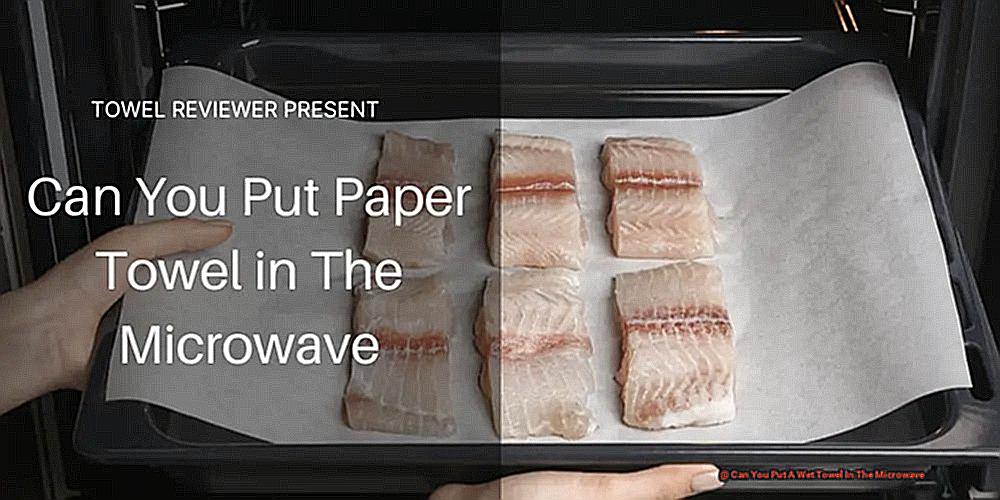
Precautions According to Microwave Manufacturer Guidelines:
- Use Microwave-Safe Materials: Always ensure to use microwave-safe materials, such as a microwave-safe plate or bag, when heating up a wet towel.
- Monitor Closely: It is crucial to monitor the wet towel closely while microwaving it and not leave it unattended to prevent potential hazards.
- Heat in Short Intervals: To avoid overheating the towel, it is advised to heat it in short intervals of 30 seconds at a time, checking its temperature between each interval.
- Check Temperature Before Use: Before using the heated towel, make sure to check its temperature to prevent burns or injuries.
- Follow Manufacturer’s Instructions: Each microwave may have different guidelines for heating up wet towels, so it is important to follow the instructions provided by the manufacturer for safety and longevity of the appliance.
Alternative Methods:
If using a microwave to heat up wet towels does not feel safe or comfortable, there are alternative methods that can be used:
- Use a Dryer on Low Heat: A dryer on low heat is another safe and effective option for warming up wet towels.
- Air-Dry: Simply air-drying the towel is also a safe alternative, although it may take longer for the towel to dry completely.
In conclusion, while utilizing a microwave to dry wet towels may seem convenient, it is crucial to follow the guidelines provided by microwave manufacturers for safety and to avoid potential hazards. If a microwave does not feel like a safe option, alternative methods can also be used.
The Role of Microwave Wattage in Drying Wet Towels
The power of a microwave is crucial in determining how quickly wet towels can dry. Microwaves with a higher wattage, typically above 1000 watts, have more energy and can evaporate water faster than lower wattage microwaves.
As a result, wet towels will dry faster in a high-wattage microwave compared to a lower one.
| Wattage | Drying Time | Notes |
| Above 1000 watts | Shorter drying time | Ideal for thicker towels or when time is limited |
| 700-1000 watts | Medium drying time | Suitable for most towels and convenient for everyday use |
| Below 700 watts | Longer drying time | Best for thinner towels or when heating up multiple towels at once |
It’s worth noting that specific instructions for drying wet towels in the microwave may vary among different models. Therefore, it’s essential to follow the guidelines provided by the manufacturer to prevent any accidents or damage to the microwave.
Moreover, the thickness of the towel also plays a role in the drying time in a microwave. Thicker towels hold more water and take longer to dry compared to thinner ones. It’s recommended to adjust the drying time accordingly to avoid over-drying or under-drying the towels.
While using a microwave to dry wet towels may seem convenient, it’s not the only option. Air-drying outside or using a clothes dryer are also safe and effective methods. It’s important to choose the method that best suits your needs and preferences.
Additionally, there are some common myths and misconceptions about microwaving wet towels. Some assume that all materials are safe to be microwaved, or that the towels will always come out perfectly dry. It’s crucial to read and follow the instructions carefully to prevent any accidents or damage.
After microwaving wet towels, it’s important to handle them with care as they may be hot. Allow them to cool before folding or storing them, and wash them regularly without using excessive detergents or fabric softeners. This will ensure that your towels stay in good condition and last longer.
In conclusion, the wattage of a microwave does have an impact on the drying time of wet towels. It’s crucial to follow the guidelines provided by the manufacturer and adjust the drying time according to the thickness of the towel.
Understanding the Importance of Towel Thickness
When deciding whether or not to microwave a towel, the thickness of the towel is a crucial factor to keep in mind. This is due to the way microwaves function – by causing water molecules to vibrate, producing heat that can quickly dry or warm up items. However, the thickness of a towel can greatly impact its safety and efficiency when being microwaved.
Understanding the Importance of Towel Thickness:
- Safety Measures: Towels made with thicker materials, such as cotton or polyester blends, contain more water molecules and are therefore safer to microwave than thinner towels with low water content. It is important to remember that overheating a towel in the microwave can lead to smoldering or even catching fire, as there may not be enough water molecules present.
- Efficiency Factors: Thicker towels will take longer to heat up and dry compared to thinner towels due to their multiple layers and higher density. This makes it more challenging for the water molecules to vibrate and produce heat. Therefore, when considering microwaving a towel for quick drying or heating, it is important to choose one that is not excessively thick.
- Wattage Considerations: The wattage of a microwave also plays a crucial role in how efficiently and quickly a towel can be heated or dried. Microwaves with higher wattage, typically above 1000 watts, are better suited for thicker towels or when time is limited. Lower wattage microwaves may not generate enough heat to effectively dry or warm up thicker towels.
- Alternative Heating Methods: While microwaving wet towels may be a convenient option, there are other ways to dry or warm them without risking potential hazards. These include using an electric dryer, towel warmers, or simply hanging them outside in the sun. It is extremely important to never put metal or plastic items in the microwave as they can cause sparks and fires.
Alternatives to Microwaving Wet Towels
There are numerous alternative techniques for drying wet towels without relying on a microwave, such as air drying, using a heated airer, and utilizing a hairdryer. Additionally, you can try the towel sandwich method or place a self-rotating fan near your airer or drying rack to help speed up the process. Let’s delve deeper into these methods.
- Air Drying: Air drying is a natural and cost-effective approach to drying wet towels without using a microwave or dryer. You can hang your towels outside on a breezy day or inside on an airer. To enhance air circulation and expedite the process, ensure to spread out your towels and rotate them regularly.
- Heated Airer: If you want a faster option than air drying, consider using a heated airer. These devices provide gentle heat that helps evaporate excess water, resulting in quicker drying times. You can place your airer near a heat source or invest in a heated airer specifically designed for drying clothes.
- Towel Sandwich Method: The towel sandwich method involves placing your wet towel between two dry towels and then ironing over them to dry the wet towel. This technique works because the dry towels absorb the moisture from the wet towel, allowing it to dry faster.
- Hairdryer: If you’re in a hurry, you can also use a hairdryer to quickly dry your wet towels. Simply point the hairdryer towards the towels and move it around to help evaporate the excess water.
- Self-Rotating Fan: Another passive approach to drying wet towels is by using a self-rotating fan. Place the fan near your airer or drying rack and let it circulate air, helping to speed up the drying process.
Microwaving wet towels may not always be the safest or most efficient option, especially for thicker towels. However, there are multiple alternative methods that you can use to effectively dry your towels without using a microwave.
Common Myths and Misconceptions About Microwaving Wet Towels
There are numerous false beliefs and misunderstandings circulating regarding microwaving wet towels. Some individuals assert that it is hazardous, damaging to the microwave, or an ineffective approach for drying towels. However, with appropriate guidance and adjustments, these myths can be debunked.
First and foremost, there is a misconception that placing a wet towel in the microwave is unsafe. While there may be potential dangers, it can be done securely by adhering to guidelines such as using a microwave-safe container, avoiding overheating, and steering clear from metal components.
Another myth is that microwaving wet towels can harm the microwave. This is untrue as long as proper temperature restrictions and usage protocols are followed. It is advised to use a lower setting and regularly check the towel while microwaving.
Certain people believe that thicker towels take longer to dry in the microwave. However, adjusting the drying time based on towel thickness can result in safe and effective drying. It is crucial to follow the manufacturer’s recommendations when using a microwave to dry towels.
There is also a misconception that microwaving wet towels is an ineffective method for drying them. This is false as long as safe protocols are followed and adjustments are made for towel thickness. The wattage of the microwave also impacts drying time, with higher wattage resulting in quicker drying.
Other common myths and misconceptions include assuming that all materials are safe to microwave and that all towels will be completely dry after microwaving. It is important to handle the towels with care after microwaving and regularly wash them without using excessive detergents or fabric softeners.
In conclusion, while there may be potential hazards and limitations, microwaving wet towels can be a secure and efficient approach for drying them.
Dry Towel Maintenance and Care Tips
We all want soft, fluffy and absorbent towels, but did you know that improper maintenance can lead to them becoming rough, thin and less absorbent? Here are some effective ways to maintain and care for dry towels, ensuring they last longer and remain in excellent condition.
Firstly, avoid using fabric softener and dryer sheets. They leave a residue on towels that can make them less absorbent over time. Instead, try using vinegar as a natural fabric softener.
Next, dry your towels on low heat. High heat can damage the fibers of the towel, causing them to break down and become less absorbent. It is best to dry towels on a low heat setting, or even air dry them if possible.
Make sure your towel bar allows towels to spread out. Towels need proper ventilation to dry properly and avoid mildew and musty smells. Ensure your towel bar allows for enough space between towels for air to circulate.
Don’t overcrowd your towels. Overcrowding them in the washing machine or dryer can prevent them from getting fully clean or dry. Follow the manufacturer’s recommendations for load size to ensure proper care.
Invest in high-quality towels made from 100% cotton or bamboo fibers. These materials are more durable and absorbent, and will last longer than cheaper alternatives.
Wash your towels before use. New towels often have a coating that can prevent them from being absorbent. It is important to wash new towels before using them to remove this coating and improve their absorbency.
Follow proper washing and drying techniques. Make sure to wash towels in warm water with a gentle detergent, and avoid using bleach or harsh chemicals. Tumble dry on low heat or air dry for best results.
Avoid using fabric softeners. As mentioned earlier, fabric softeners can leave a residue on towels that can make them less absorbent over time. Stick to using vinegar or other natural options instead.
Store your towels properly. Make sure to store them in a well-ventilated area, away from moisture and humidity. This will help prevent mildew and musty smells from developing.
Lastly, rotate your towels regularly. To ensure that all of your towels are being used evenly, rotate them between uses. This will help extend their lifespan by preventing certain towels from being overused.
By following these simple tips, you can maintain and care for your dry towels effectively, ensuring they remain soft, fluffy and absorbent for years to come. Remember, investing in quality towels and using proper maintenance techniques will save you time and money in the long run.
FAQ
Unfortunately, it is not advisable to place a damp towel in the microwave as it can result in harm to both individuals and the appliance itself.
Wet towels have the potential to rapidly heat up and even ignite in the microwave, creating a serious safety hazard. Furthermore, the moisture from the towel can cause harm to delicate electronic parts of the microwave, leading to possible malfunctions.
Additionally, there are health concerns related to heating bacteria that may be present in damp towels.
Safe Methods to Dry Towels in the Microwave
There are several safe ways to dry towels in the microwave, but it’s crucial to take precautions and follow guidelines to prevent potential hazards. Here are some effective and safe methods for drying towels in the microwave:
Place a moist towel in a microwave-safe container and heat it for 30 seconds at a time, checking the towel between each interval until it is completely dry. This method is suitable for smaller towels and microwaves with lower wattage.
For larger towels or thicker materials, you can use the same method but increase the drying time for each interval to 1-2 minutes. Again, check the towel between each interval until it is fully dry.
Another secure approach is to place a damp towel on a microwave-safe plate and cover it with another moist towel. Microwave for 2-3 minutes and check the towels periodically until they are completely dry.
If your microwave has a defrost setting, you can use this to effectively dry towels. Simply place the damp towel on a microwave-safe plate and select the defrost setting. Check the towel periodically until it is fully dry.
Utilize the rotating turntable in your microwave to evenly distribute heat and speed up the drying process.
It’s important to note that not all materials are suitable for microwaving, so always check the manufacturer’s guidelines before attempting to dry towels in the microwave.
In conclusion, utilizing a microwave to dry towels can be a safe and efficient method, but it’s essential to take precautions and follow guidelines to avoid any potential hazards. Always use microwave-safe containers, adjust drying times based on wattage and towel thickness, and regularly wash towels without using excessive detergents or fabric softeners.
Following Microwave Manufacturer Guidelines
Microwave producers generally offer the subsequent recommendations for safely drying a damp towel in the microwave:
- Utilize short intervals: When drying a small towel in the microwave, it is advised to use brief intervals of 30 seconds or less. This allows for gradual heating of the towel and prevents it from getting too hot.
- Increase time for larger or thicker towels: For larger or thicker towels, it is recommended to increase the heating time in increments of 30 seconds until the desired level of dryness is achieved.
- Cover with a moist towel: To prevent overheating or fire hazards, it is crucial to cover the towel with a second, damp towel. This helps regulate heat and prevents the towel from becoming too dry.
- Utilize the defrost setting: Some microwaves have a defrost setting that can be used to safely dry wet towels. This setting is specifically designed to slowly and evenly heat up food, which can also be beneficial for drying towels.
- Use the rotating turntable: If your microwave has a rotating turntable, be sure to use it when drying wet towels. This ensures even distribution of heat and ensures that all parts of the towel are dried properly.
- Follow manufacturer’s instructions: Different brands and models of microwaves may have varying guidelines and settings for drying wet towels. Always refer to the manufacturer’s instructions for specific recommendations.
Remember, always follow these guidelines and use caution when drying wet towels in the microwave. Failure to do so can lead to damage to the microwave or even pose a fire hazard.
The Role of Microwave Wattage in Drying Wet Towels
The power of a microwave is a crucial factor in determining the time it takes to dry wet towels. Higher wattage microwaves will dry towels at a faster rate, while lower wattage microwaves will require more time to dry towels. This is due to the correlation between wattage and heat production, resulting in quicker evaporation of moisture from the towels.
It is important to consider following the manufacturer’s instructions and recommended temperature limits when using higher wattage microwaves as they may overheat and pose potential fire hazards. Additionally, thicker towels may require longer drying times at a lower temperature to prevent overheating.
Apart from microwaving, there are other methods of drying wet towels, such as air-drying or using a clothes dryer. However, these methods may take longer and may not be as energy-efficient as using a microwave.
It is also essential to address common misconceptions about microwaving wet towels. Although it may seem convenient and efficient, not all materials are suitable for microwave usage. It is crucial to check the manufacturer’s guidelines for materials that can be safely microwaved.
Moreover, microwaving towels does not guarantee complete dryness. It is best to use a microwave in conjunction with other drying methods or as a quick solution for slightly damp towels.
After microwaving, it is important to handle the towels with caution as they may still be hot.
Regularly washing the towels is also recommended to maintain cleanliness and prevent any potential bacteria growth.
Understanding the Importance of Towel Thickness
When it comes to microwaving, the thickness of a towel plays a crucial role in its performance. Thicker towels tend to heat up at a faster rate and with more intensity. However, they also hold onto more moisture and can reach higher temperatures. To ensure safety and optimal results, it is crucial to use towels with the appropriate thickness and follow necessary precautions.
The importance of towel thickness becomes apparent when considering the science behind microwaving. The waves emitted by a microwave are designed to be absorbed by water molecules, causing them to vibrate and generate heat. Thicker towels have more water molecules to absorb these waves, resulting in a quicker and hotter heating process.
But while thicker towels may seem like the obvious choice for faster heating, they also retain more moisture which can lead to dangerously high temperatures. This is why it is crucial to use towels with appropriate thickness and not just the thickest one available.
When using towels in the microwave, it is also important to remember safety precautions. Always make sure the towel is completely damp before placing it in the microwave, as dry spots can lead to fire hazards. Additionally, never leave the microwave unattended while heating a towel and avoid overheating as it can damage both the towel and the microwave.
Alternatives to Microwaving Wet Towels
Although it may seem like a quick and easy solution, microwaving wet towels is not always the safest or most effective method for warming them up. Luckily, there are various alternatives that can provide safe and effective results. These options include air-drying, tumble-drying, using an electric towel warmer, using a dryer on low heat, utilizing a hot water bottle, and utilizing ovens or steamers.
Below is a detailed breakdown of each alternative and how it can safely and effectively warm up wet towels:
- Air-drying: This approach involves hanging the wet towel outside on a clothesline or indoor drying rack and allowing it to naturally air dry. While this option may take longer than others, it is completely safe and does not require any additional equipment.
- Tumble-drying: Another option is to use a clothes dryer to dry the towel. It is important to select the appropriate temperature setting to avoid damaging the towel. Low heat or air-only settings are recommended for drying towels.
- Electric towel warmer: This device heats up towels and keeps them warm for an extended period of time. It is an excellent alternative for those who prefer warm towels after a shower or bath.
- Dryer: Throwing a damp towel in the dryer on low heat can also provide a warm and dry towel without the risk of fire. It is essential to use low heat settings to prevent damage to the towel.
- Hot water bottle: For those who prefer dry heat therapy, using a hot water bottle is an exceptional alternative to microwaving wet towels. Simply fill the bottle with hot water and place it on top of the towel for a few minutes to warm it up.
- Ovens or steamers: Other safe methods for warming towels include using ovens or steamers. These can provide dry heat to effectively warm up towels without risking damage.
These alternatives offer safe and effective ways to warm up wet towels without the risk of damage or fire.
Common Myths and Misconceptions About Microwaving Wet Towels
| Common Myths and Misconceptions About Microwaving Wet Towels | ||
| Myths | Reality | Explanation |
| Microwaving wet towels will always result in perfectly dry towels. | This is not always the case. | The drying process can vary depending on factors such as towel thickness, microwave wattage, and container used. It is not a foolproof method for drying towels. |
| All materials can be safely microwaved to dry towels. | This is not true for all materials. | Some materials may catch fire or melt in the microwave, causing damage or posing a safety hazard. Always check the material of your towel and follow manufacturer’s guidelines. |
| It is safe to put a wet towel directly in the microwave without any precautions. | This is not recommended. | Proper safety precautions should always be followed to avoid steam burns, fire hazards, and damage to the microwave. This includes using microwave-safe containers or racks and heating in short bursts. |
There are many misconceptions surrounding the use of microwaves to dry wet towels. While it may seem like a simple and efficient solution, there are important considerations to keep in mind.
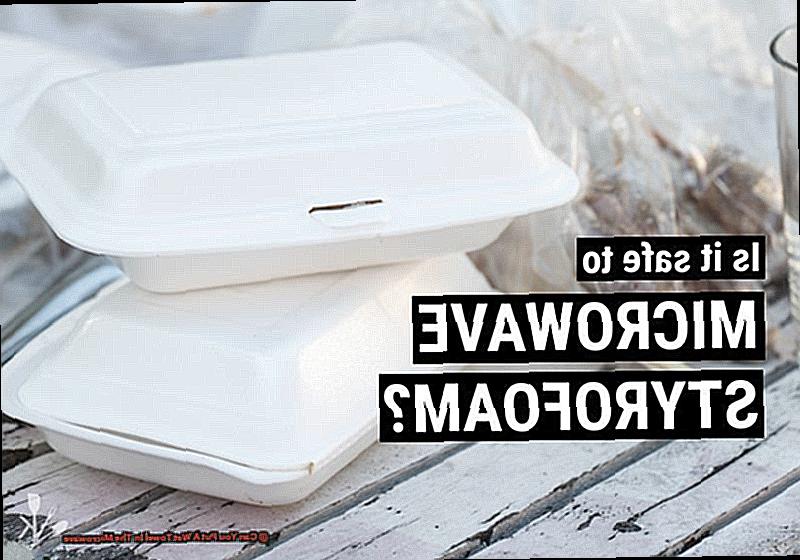
One of the most common myths is that microwaving wet towels will always result in perfectly dry towels. However, this is not always the case. The drying process can vary depending on factors such as towel thickness, microwave wattage, and the type of container used. It is not a guaranteed method for drying towels, and improper use can even lead to fires.
Another misconception is that all materials can be safely microwaved to dry towels. This is not true as certain materials may catch fire or melt in the microwave, causing damage or posing a safety hazard. It is important to check the material of your towel and follow manufacturer’s guidelines when using a microwave for drying.
Lastly, some may believe that it is safe to put a wet towel directly in the microwave without any precautions. However, this is not recommended as it can result in steam burns, fires, and damage to the microwave. To safely dry towels in the microwave, use microwave-safe containers or racks and heat in short bursts.
Dry Towel Maintenance and Care Tips
To ensure your towels stay in top condition and last longer, follow these simple steps:
Properly wash towels
- Wash your towels every three uses to prevent the buildup of bacteria and mildew.
- Use a natural detergent when washing and avoid fabric softeners.
- To maintain the softness of your towels, wash them separately from other laundry.
Dry towels properly
- Avoid using high heat in the dryer as it can damage the fibers.
- Opt for medium heat or air-dry outside in the sun.
- Add tennis balls or dryer balls to fluff up and soften your towels.
Store towels correctly
- Make sure your towels are completely dry before storing them.
- Store them in a cool and dry place, away from direct sunlight.
- Rotate your towels regularly to distribute wear and tear evenly.
Avoid using bleach
- Bleach can weaken the fibers of your towels, leading to fraying and thinning.
- Instead, use natural whiteners such as baking soda or vinegar.
Replace towels when needed
- Even with proper care, towels will eventually wear out.
- Replace them every 2-3 years, depending on how often they are used.
- Signs it’s time to replace include thinning, discoloration, and a musty smell.
In addition to these steps, it is important to be aware of the potential dangers of microwaving wet towels. Although it may seem like a convenient solution, it can actually be hazardous due to the risk of fire and burns. It is best to find alternative methods for drying damp towels and cleaning up spills.
FAQ
Absolutely not, it is not recommended to place a damp towel inside a microwave.
Doing so can result in severe burns, sparks, and potential damage to the microwave itself.
Conclusion
In conclusion, it is crucial to avoid microwaving wet towels as it can result in severe consequences such as fires, burns, and damage to both the towel and the microwave. It is imperative to be aware of these potential dangers and carefully adhere to manufacturer guidelines. Safer alternatives such as using a dryer or air-drying should be considered for drying wet towels.
Furthermore, keep in mind that the wattage of a microwave greatly impacts the efficiency of drying towels, with higher wattage models being more effective. Always prioritize safety when using household appliances.
